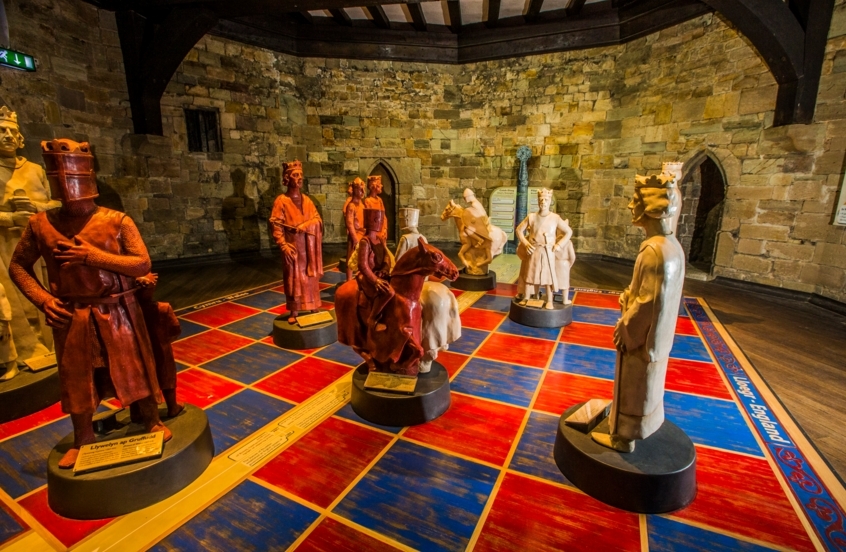How revitalisation of Caernarfon Castle has brought the town to life
 This summer saw the first ever live performance of songs from a Welsh television rock opera, Melltithar y Nyth, as part of the GŵylArall arts festival, one of several community events held at Caernarfon Castle.
This summer saw the first ever live performance of songs from a Welsh television rock opera, Melltithar y Nyth, as part of the GŵylArall arts festival, one of several community events held at Caernarfon Castle.
Community involvement is one element in a multi-million-pound scheme to revitalise the castle and parts of the historic town.
Another vital component is the new interpretation and the new entrance to the castle itself — a £780,000 investment through Cadw and the Welsh Government’s Heritage Tourism Project, part-funded by the European Regional Development Fund.
Part of the aim is to encourage visitors to spend more time at Edward I’s great fortress-palace, which is already estimated to contribute around £2.65 million to the local economy. The new interpretation also creates links with other historic sites in the town and surrounding area.
There are four new exhibitions for visitors to enjoy:
- The Game of Crowns is a huge chessboard depicting the power struggle for the control of medieval Wales. Chessmen are placed along a timeline, showing how Welsh princes were replaced by ‘Princes of Wales’.
- The Life of Eleanor of Castile is a colourful carousel depicting the life of a medieval queen. But the story is bittersweet and the harsh realities of childbirth, crusades, business and war dispel any notions of a fairy-tale existence.
- Another display shows how Edward I used Welsh legends to justify his claim as ruler of the Welsh people. Visitors can get into his head and see what may have driven him to build his castle at Caernarfon.
- A new animation gives visitors an introduction to the history of the castle, from its early Roman influence right up to Prince Charles’s investiture and its recognition as a World Heritage Site.
The work at the castle is part of a wider regeneration programme focusing on Caernarfon waterfront and town centre, with a partnership of local and national organisations, including Cadw, working on a variety of different schemes.
Since 2012, the town’s promenade, under the long sweep of the medieval town walls, has been improved with new paving and lighting and there are ambitious plans for other parts of the waterfront. These plans include a new terminus for the Ffestiniog Welsh Highland Railway and a new lease of life for the ‘island site’ on the former slate quay between the railway and the castle. The aim is to safeguard the heritage of the area, bringing key buildings back into use, whilst also offering apprenticeships, training, learning and volunteering opportunities for local people, as well as offer new attractions for tourists.
The heritage economy in Gwynedd is estimated to be worth around £515 million and to employ more than 8,000 people. Heritage tourism in itself accounts for about 80% of both totals.
The whole regeneration initiative will see an investment of £14–17 million and the creation of more than 80 new jobs.
With an emphasis on the arts and a new World Heritage Site Management Plan that stresses the castle’s potential role in improving people’s quality of life — including its part to play in the community — the 700-year-old fortress is ready to rock in more ways than one.













